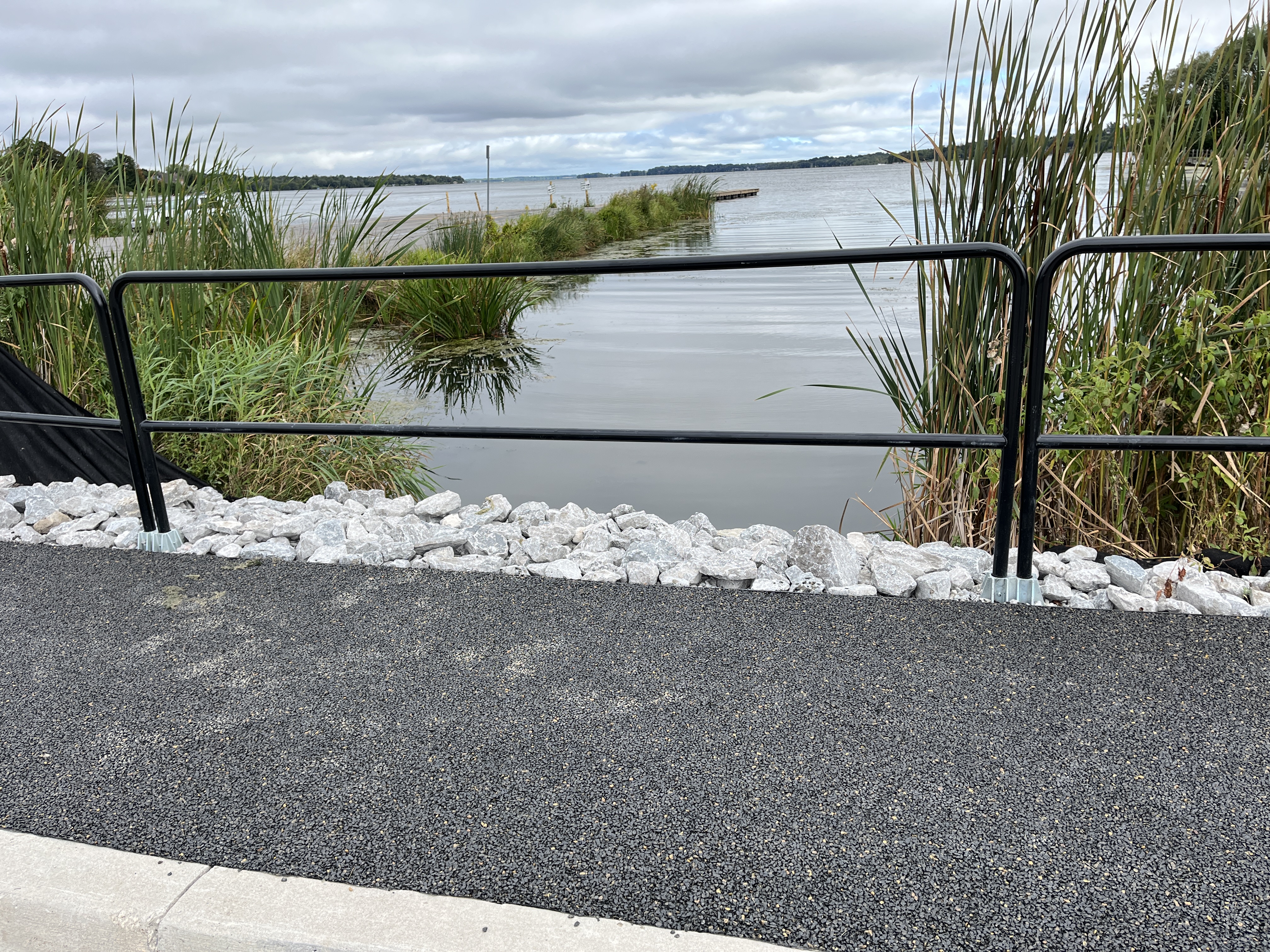Creating a healthy garden
Explore the different types of gardens that you can plant and other things you can do to improve environmental sustainability on your property.
Garden Guides
|
|
Create healthy, natural, and stunning gardens on your property using our free garden guides. Complete with design templates, species lists, maintenance tips, and more, it's never been easier to create gardens that support pollinators, strengthen shorelines, and absorb pollutants and runoff.
Available guides include Native Plant Pollinator Garden, Native Plant Understory Garden, Low Maintenance Rain Garden, and Urban Forest Guide. Click on a garden guide below to get started.
|
Pollinator garden
|
|
Pollinators are animals, mostly insects, that transfer pollen from flower to flower, fertilizing plants. Creating healthy gardens with native flowering plants support local pollinators. They're important because they account for a significant amount of our food sources and ecological balances.
See native plants for pollinators for detailed information.
|
Rain garden / BlueScaping
|
|
A rain garden is a landscaped depression that is planted with native shrubs, grasses and flowers. It's designed to collect rainwater that runs off hardened surfaces such as your roof or driveway. See the landscape design guide for low impact development and BlueScaping our neighbourhoods for more information.
How it works
A rain garden slows and reduces stormwater runoff by temporarily holding it and allowing the water to soak into the ground. The native plants also help filter the contaminants and sediments that would otherwise be carried into your lake or the nearest water body through the storm water system.
Here are a few things to consider when building one:
- Proper Location – It's important to identify an area on your lawn where stormwater can be captured, such as near a downspout or even the overflow from a rain barrel, or at an existing depression in the ground.
- Size - The size and depth of your rain garden is important as it needs to be large enough to manage the amount of stormwater it receives.
- Soil Type - Use sandy or loam soils (loam soils are an even mix of sand, silt and clay) as they are porous and allow the water to seep back into the ground at a faster rate. You want to avoid clay soils as they are less porous.
- Plants - It is important to choose plants that are native to the area and can tolerate both wet and dry conditions. Certain native plant species have fibrous root systems that grow well in rain garden conditions. Remember to consider whether the species are shade or sun tolerant species.
|
Shoreline garden
|
|
View our shoreline owner's guide to lakeland living to learn how to develop a healthy shoreline garden. Healthy shoreline gardens can make a big difference, and provide many benefits including:
- Protecting water quality by reducing the amount of nutrients, bacteria, contaminants, and sediments that reach your lake or river
- Reducing erosion and sedimentation that can impact fish spawning beds
- Providing wildlife habitat for native species such as birds, dragon flies, butterflies, frogs and fish
- Deterring nuisance Canada Geese that can make a mess and contribute to elevated E.coli in the water
Shorelines are often called the "ribbon of life” because they're critical to the ecological health of lakes and rivers.
|
Rain barrels
|
|
Landowners can purchase rain barrels from their local municipality, garden centre, or hardware store. Please find information below on how to contact your local municipality to order rain barrels.
City of Kawartha Lakes
Telephone: 705-324-9411 ext. 2365
|
Low Impact Development (LID)
Low Impact Development (LID) is a practice of mimicking natural processes to protect water quality and associated aquatic habitat. When water runs over land, it picks up every small particle in its path, including pet waste, pesticides, automobile fluids, and cigarette butts. This water, called runoff, can impact our water quality and even our water quantity. Runoff-related problems are only exacerbated in areas with many roofs, driveways, parking lots, roads, and other ‘hard’ surfaces. By undertaking LID projects, we are helping our communities to 'soften' their landscapes to tackle flooding, erosion, and water pollution
Permeable Pavement in Port Perry
|
|
Explore our latest initiative along Old Rail Lane in Port Perry, developed in collaboration with the Township of Scugog and RBC Tech for Nature This project focuses on addressing stormwater runoff and enhancing the water quality of Lake Scugog through the implementation of permeable pavement
Our mission is to combat the adverse effects of stormwater runoff, which can harm aquatic life and water quality by transporting harmful chemicals and sediment into the lake. This innovative project utilizes permeable pavement as opposed to traditional concrete or asphalt Permeable pavement allows water to pass through, preventing flooding and reducing the influx of nutrient-rich stormwater into Lake Scugog, while providing a safe walking space for pedestrians.
5 key benefits of permeable pavement:
-
-
Flood prevention excess stormwater is treated on the spot, flowing directly through the permeable pavement, rather than over its surface, preventing local flooding and safeguarding our community.
-
Water quality improvement contributing to cleaner and healthier water in Lake Scugog.
-
Ecosystem enhancement supporting vital lake organisms and aquatic life.
-

|
Additional resources





